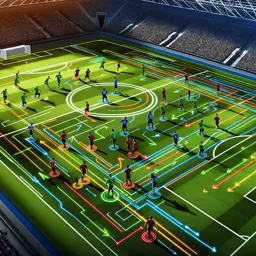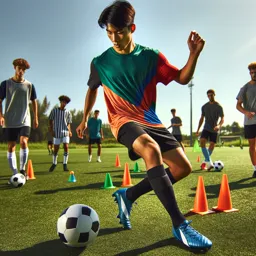Tennis is a demanding sport that requires not only skill but also excellent physical conditioning. Players need strength, endurance, speed, and agility to perform at their best, especially in long matches. In this article, we’ll explore essential conditioning exercises that can help you build the strength and endurance needed to excel on the court.
1. Strength Training for Tennis
Strength is essential for generating power in your serves, groundstrokes, and volleys. Incorporating strength training into your routine will help you hit harder, move faster, and reduce your risk of injury.
Key Strength Exercises:
- Squats: Squats strengthen your legs and glutes, which are crucial for powerful movements on the court. Add weight with dumbbells or a barbell to increase resistance.
- Lunges: Lunges build lower body strength and improve balance, helping with quick direction changes during rallies.
- Deadlifts: Deadlifts work your entire posterior chain, including your back, glutes, and hamstrings, which are important for explosive power in tennis.
- Core Workouts: Exercises like planks, Russian twists, and leg raises target the core muscles, which provide stability during strokes and help prevent injuries.
Pro Tip: Focus on compound movements that engage multiple muscle groups to develop overall strength and functional fitness.
2. Endurance Training for Tennis
Endurance is critical for sustaining energy throughout long matches. To maintain a high level of performance during multiple sets, tennis players must focus on cardiovascular fitness.
Key Endurance Exercises:
- Running (Intervals): Interval training involves alternating between periods of sprinting and jogging or walking. This type of training simulates the stop-start nature of tennis and builds both aerobic and anaerobic endurance.
- Jump Rope: Skipping is excellent for improving footwork and building cardiovascular endurance. Incorporate 5-10 minute jump rope sessions into your warm-up or conditioning routine.
- Swimming: Swimming is a low-impact way to build cardiovascular endurance while giving your joints a break from high-impact activities like running.
Pro Tip: Incorporate endurance exercises at least three times a week to build the stamina needed for long matches.
3. Agility and Footwork Drills
Tennis players must be able to move quickly and change directions at a moment’s notice. Agility and footwork drills help improve your speed, balance, and reaction time on the court.
Key Agility and Footwork Drills:
- Ladder Drills: Set up an agility ladder on the ground and perform quick foot movements through each rung. This improves your ability to move laterally and make quick direction changes.
- Cone Drills: Set up cones around the court and practice running to each one, simulating the quick bursts of speed required during a point.
- Shuttle Runs: Shuttle runs involve sprinting between two points as fast as possible. This drill enhances both speed and endurance, simulating the short bursts of movement needed in tennis.
Pro Tip: Always stay on the balls of your feet to remain light and ready to move in any direction.
4. Plyometric Exercises for Explosiveness
Plyometrics focus on developing explosive power, which is essential for quick starts, powerful serves, and fast net play. These exercises involve jumping and bounding movements that train your muscles to generate force quickly.
Key Plyometric Exercises:
- Box Jumps: Jump onto a box or platform from a standing position. This builds explosive leg power, which is crucial for quick bursts of movement.
- Lateral Bounds: Jump from side to side, focusing on the power and balance of each movement. This exercise improves lateral movement, which is important for chasing down wide shots.
- Jump Squats: Perform squats and explode upward into a jump. This increases lower body strength and explosiveness.
Pro Tip: Incorporate plyometrics into your routine twice a week to build explosive power without overtraining.
5. Flexibility and Mobility Exercises
Flexibility is often overlooked but is crucial for preventing injuries and improving range of motion during play. Stretching and mobility exercises help keep your muscles and joints limber, ensuring you can reach those tough shots.
Key Flexibility and Mobility Exercises:
- Dynamic Stretching: Before matches or training sessions, perform dynamic stretches like leg swings, arm circles, and torso twists to warm up your muscles.
- Static Stretching: After training or matches, incorporate static stretching exercises such as hamstring stretches, calf stretches, and hip flexor stretches to improve flexibility.
- Yoga: Practicing yoga improves both flexibility and balance, helping tennis players move more efficiently on the court.
Pro Tip: Dedicate at least 10 minutes before and after each session to stretching and mobility work to improve your flexibility and prevent injuries.
Conclusion
Tennis conditioning involves a combination of strength, endurance, agility, and flexibility training. By incorporating these exercises into your routine, you can improve your overall fitness, enhance your performance on the court, and reduce your risk of injury. Whether you’re a competitive player or just looking to improve your game, focusing on tennis-specific conditioning will give you the edge you need to excel.

































